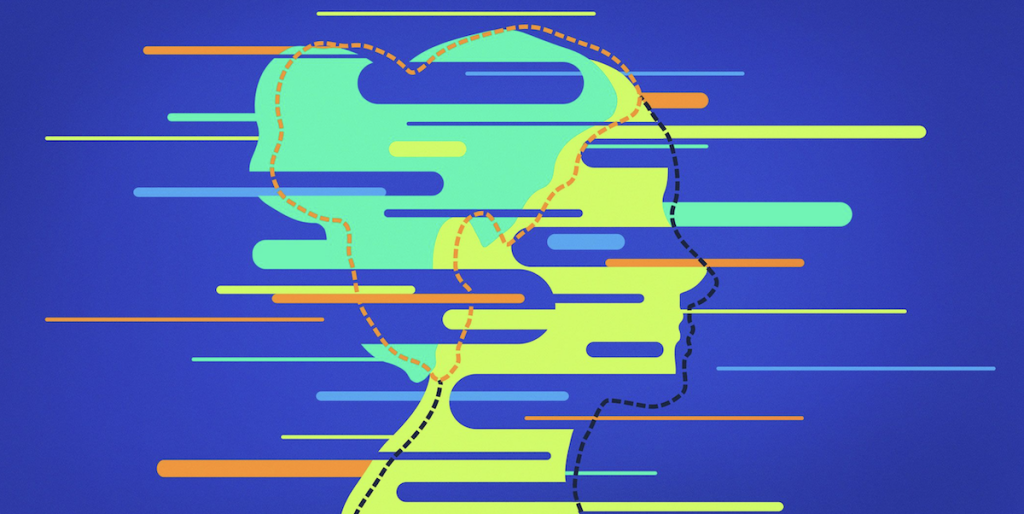WV Press to share articles: ‘Committed to Memory’ feature on Alzheimer’s disease available today
WV Press Feature Sharing
MORGANTOWN, W.VA. — Pam Pritt, executive editor of WVU Magazine Communications, wants WV Press Association member newspapers to know that articles in WVU Magazine, which features a new digital format, are available for reprinting in WV Press community newspapers or to serve as ideas or support for local articles.
Pritt, who once served as editor/publisher and part-owner of the Pocahontas Times, as well as a past-president and board member for WV Press, understands the value of access to research and support materials to community newspapers that might not have the staffing to generate such detailed feature articles.
“There’s some really good content in this magazine. I hope you’ll enjoy it …,” said Pritt.
The new digital issue of WVU Magazine featured numerous articles that might benefit WVPA member newspapers in the regular edition, online or in a special section in either format. There is also art and, with some articles, videos..
To assist member newspapers, WV Press will distribute the articles by email to editors and share on its social media platforms and in its newsletters: “Today’s WVPA News, sponsored by AARP” and ‘Week In Review,” sponsored by City National Bank.
Editor’s Note: The first article being shared is ‘Committed to Memory,’ a feature on Alzheimer’s disease. The article below, with art and video, can be used as a single feature or divided into series.

Committed to Memory
Written by Stacey Elza, Micaela Morrissette and Laura Roberts,
with artwork by Michelle McGettigan and video by Andrew Marvin.
MORGANTOWN, W.Va. — The number of Americans living with Alzheimer’s disease is expected to grow like wildfire. As of 2020, as many as 5.8 million had the progressive disease that afflicts parts of the brain that control thought, memory and language.
By 2060, the number of Americans with Alzheimer’s is projected to soar to 14 million. Researchers at West Virginia University are working feverishly to impede that trend as much as possible – and to focus on innovative ways to treat existing patients.
Ongoing studies at WVU span neurosciences, physiology and chemistry, among other fields, and involve not only established, world-class medical experts but undergraduate students hoping to address the most common type of dementia.
More harm than good
The WVU Rockefeller Neuroscience Institute launched a clinical trial that pairs focused ultrasound treatment with Alzheimer’s antibody drug therapy. The trial is unlocking new potential for treating Alzheimer’s disease by helping therapeutic drugs reach the parts of the brain where they can do the most good.
Under normal conditions, the blood–brain barrier limits a drug’s ability to penetrate the brain. That’s because the blood-brain barrier is protective. It prevents harmful things (like toxins and germs) from penetrating the brain, while granting access to necessary ones (like water and oxygen). But when it comes to administering Alzheimer’s drugs, the blood–brain barrier has a downside. In “protecting” the brain, it can screen out the very drugs that would benefit it.
To get around this problem, researchers at RNI gave their study participant—an Alzheimer’s patient from West Virginia—an antibody drug called “aducanumab.” Aducanumab targets beta-amyloid plaques, which build up between neurons and are a hallmark of Alzheimer’s disease.
Once the drug was in the patient’s bloodstream, the researchers aimed ultrasound waves at brain regions where beta amyloid had accumulated. Their goal: to temporarily open the blood–brain barrier and facilitate drug delivery. By allowing the drug to enter the brain in key areas where amyloid plaques are present, researchers hope to accelerate the plaque-clearing process.
This study builds on RNI’s earlier work. In 2018, RNI became the first institution in the United States to use focused ultrasound to treat a patient with early-stage Alzheimer’s. The RNI team has since expanded treatment to multiple brain locations in that ongoing clinical trial, a partnership with INSIGHTEC.
“After years of successfully using focused ultrasound to safely and locally open the blood-brain barrier, we’ve now taken a critical step forward in pairing this capability with therapeutic treatment,” said Ali Rezai, executive chair of RNI. “We thank our patient and his family for being pioneers for this first-in-the-world study, which we hope leads to long-overdue relief for those struggling with Alzheimer’s.”
Remembering ‘too well’
But if Alzheimer’s disease makes memories as fragile as drawings on an Etch-a-Sketch, then post-traumatic stress disorder makes them as permanent as doodles done in Sharpie.
RNI researcher Bernard Schreurs is using animal models to test whether holding onto stressful events, rather than forgetting about them once they’re over, is related to certain changes in the tapestry of molecules that wraps itself around nerve cells. This tapestry—called the perineuronal net, or PNN—plays an important role in learning. Schreurs is investigating how mildly stressful events can change the PNN in rat models. In his study, the “stressful” event is a brief electric pulse that startles the rats, but for veterans and first responders—who face a higher-than-average risk of developing PTSD—the stressors that lead to PTSD are far more significant.
“Let’s say an Iraq vet is walking down High Street, hears a car backfire and hits the deck,” said Schreurs, who directs the West Virginia Alzheimer’s Disease Registry. “She didn’t do that before she went to Iraq. That’s the PTSD side of the research we do. We find that some of the animals—but not all of them—are overresponsive to stimuli. That’s interesting because not all people who are exposed to life-threatening events develop PTSD.”
What Schreurs and his team discover may hint at new ways to alleviate PTSD symptoms, including drug therapies that unravel the troublesome PNN. Such therapies could improve many, many lives. Consider that 11% to 20% of veterans who served in Operations Iraqi Freedom and Enduring Freedom receive a PTSD diagnosis in a given year, according to the Department of Veterans Affairs. And that’s just two military operations.
“In one sense, PTSD is the flip side of Alzheimer’s,” Schreurs said. “Instead of forgetting things, you remember them too well.”
Stress tests
At the WVU School of Medicine, research into the vascular system’s potential for preventing and treating Alzheimer’s has successfully accelerated and delayed the disease in animal trials.
Led by physiologist Paul Chantler and funded by $2 million from the National Institutes of Health, a cross-disciplinary team is taking an unconventional approach to the fight against Alzheimer’s, investigating the role stress plays.
In the brain and throughout the body, stressful events like a deadline, marathon, argument or cold require hormonal responses that raise heart rate and blood pressure. When that stress is prolonged and “chronic,” another kind of stress, “oxidative stress,” becomes a problem.
Oxidative stress occurs when the balance of certain oxygen-containing molecules within the cells goes out of whack. It can contribute to inflammation and damage the vascular system, making it harder for the body to respond to the brain’s changing needs for blood flow.
Chantler’s team is asking several questions about how oxidative stress might contribute to Alzheimer’s by driving vascular dysfunction. “The first question was, ‘Does our stress model accelerate the progression of Alzheimer’s disease?’” Chantler said. “And yes, it does.”
They found that pivotal answer by subjecting mice to chronic stress. The lab’s 3xTg mice have been genetically altered so their brains accumulate deposits of tau and beta amyloid, the proteins that reveal an Alzheimer’s diagnosis.
“We expose the mice to psychosocial stressors resembling what humans do on a daily basis: two or three stressors a day, for about seven hours in total, five days a week. So it’s like going to work, or a student going to school,” Chantler said.
“We might take away their hiding places, dampen the paper in their cages or have them standing in water. We change the angles at which their cages are tilted or put them in a cage with a different smell. Then, working with the WVU Rodent Behavior Core, we do cognitive tests to see how these stressful events affect working memory.”
The behaviorists study the mice’s memories by observing activities such as grooming. After the mice are euthanized, the team tests the health of their brains’ vessels and searches for tau and beta amyloids.
“We’re interested in how early stress in life affects the development of Alzheimer’s, and we showed that in early Alzheimer’s mouse models, when you don’t typically see a lot of changes in tau and beta amyloid, we do see this acceleration already happening when the mice experience chronic stress,” Chantler explained.
“We now know if we expose our animals at a young age, three or four months, to a stressful circumstance over a chronic period of time, we’re accelerating the development of Alzheimer’s.”
The researchers confirmed cerebrovascular dysfunction comes first, followed by tau and beta amyloid accumulation.
Moreover, when they gave the mice a drug to inhibit a certain pathway for oxidative stress, they discovered not only that it prevented dysfunction in brain vessels, but that it prevented the accumulation of tau and beta amyloid, too.
There’s more – the drug delayed the development of Alzheimer’s even in mice that weren’t exposed to chronic stressors like damp paper in the first place, which Chantler called a “big surprise.”
“Number one, that pathway for oxidative stress is critical in preventing chronic stress-induced acceleration of Alzheimer’s disease. But in addition, let’s forget about chronic stress,” Chantler said.
In other words, while the research shows chronic stress playing a meaningful part in early Alzheimer’s development and progression, Chantler’s treatment could work on patients regardless of their exposures to chronic stress, giving it a far broader reach than he’d imagined.
With collaborators James Simpkins and Eric Kelly and an entire “workforce” of doctoral, masters and undergraduate students, Chantler continues to focus on delaying the progression of early-onset Alzheimer’s, but he’s also started looking at how restricted blood flow affects the brain, an angle with promise for forms of dementia beyond Alzheimer’s.
And his PhD student Saina Prabhu is experimenting with older mice to investigate whether the vascular approach at the heart of the team’s work holds the potential to reverse Alzheimer’s once the disease has already struck. Moving the goalposts past delaying or preventing Alzheimer’s, that work positions Chantler’s team to join the search for a cure.
The eyes may have it
Alzheimer’s often doesn’t make an appearance until later in life, but early signs of the disease may appear in the eyes decades before symptoms begin, and researchers at WVU’s School of Medicine are working to identify these cues.
Senior and chemistry major Rachel McNeel, of Beckley, and Dr. Jianhai Du, an associate professor in the School of Medicine Department of Ophthalmology and Visual Sciences and Department of Biochemistry, are studying the link between the brain and the eye in Alzheimer’s disease. McNeel has been an undergraduate researcher in Du’s lab since her freshman year. She began her academic career in the research apprenticeship program, where she learned the basics of research; now, she instructs students who are new to the lab that range from undergraduate students to even post-doctoral fellows.
McNeel was excited by the opportunity to study Alzheimer’s on a project of this scale, and while results are the goal, she and Du try to highlight why their work stands out. Though many universities are studying the disease after it has manifested and progressed, WVU researchers have been focusing on the brain and the eye before Alzheimer’s develops. This perspective may hold the key to understanding its progression.
“Dr. Du likes to use a forest fire as a metaphor for Alzheimer’s Disease,” McNeel said. “When a forest fire progresses to the point that it is uncontrollable, it is very difficult to extinguish it. So, what if, instead, we study what lit the match that started that fire?”
McNeel and Du believe this metaphorical match can be found in the human eye.
“Problems with the eyes are normally a precursor of the brain when it comes to Alzheimer’s Disease,” she said. “So, we can have defects in our eyes many years before we begin having any memory deficits as a result of Alzheimer’s disease.”
While the project is still in its early stages, the data the WVU team has collected thus far is novel and promising. They’ve detected very early changes of small molecules in the eyes, which have similar changes in the brain in a classic Alzheimer’s animal model. Preliminary data shows the eyes of the Alzheimer’s model have an increase of pantothenic acid and several other essential molecules essential for lipid metabolism.
“They break down fatty foods,” McNeel said. “The increase in the eye and the brain is something that we hope can be used as a diagnostic tool. In the future, we would like to be able to use a small drop of liquid from the eye, like aqueous humor, or even a tear, as biomarkers to diagnose Alzheimer’s Disease early.”
While research is ongoing, real-life Alzheimer’s patients continue to struggle with the disease. McNeel said she didn’t realize the potential the project held until families of patients began reaching out to WVU in search of help.
“Our research is still in the beginning,” she said. “I wish more than anything that I could help them. That’s when I realized this is something huge to be a part of. It’s been eye opening for me.”
The answers have yet to be found, but the need for them continues to push WVU student and faculty researchers forward in the search for a cure. McNeel was acknowledged for those efforts in April of 2022, when she was chosen to present to members of Congress for Posters on the Hill, an annual event for outstanding student researchers sponsored by the Council for Undergraduate Research. It’s her hope that the time she and her team dedicate to the work will yield successful steps in curing Alzheimer’s.
“There’s a lot of hope that’s coming from this project to learn more about the progression of Alzheimer’s disease,” she said. “I’m really passionate about it.”







